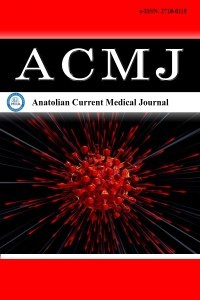1. <ol>
<li style="margin-left: 18pt;">
Nelson DE, Kreps GL, Hesse BW, et al. The Health Information National Trends Survey (HINTS): development, design, and dissemination.J Health Commun. 2004;9(5):443-484.
<li style="margin-left: 18pt;">
Diaz JA, Griffith RA, Ng JJ, Reinert SE, Friedmann PD, Moulton AW. Patients use of the internet for medical information. J Gen Intern Med. 2002;17(3):180-185.
<li style="margin-left: 18pt;">
Finney Rutten LJ, Blake KD, Greenberg-Worisek AJ, Allen SV, Moser RP, Hesse BW. Online health information seeking among US adults: measuring progress toward a healthy people 2020 objective. Public Health Rep. 2019;134(6):617-625.
<li style="margin-left: 18pt;">
Duggan M. Mobile messaging and social media. Pew research center internet. Science & Tech Fact Sheets. 2015
<li style="margin-left: 18pt;">
Desai T, Shariff A, Dhingra V, Minhas D, Eure M, Kats M. Is content really king? An objective analysis of the public’s response to medical videos on YouTube. PLoS One. 2013;8(12):e82469.
<li style="margin-left: 18pt;">
Rossi MJ, Brand JC, Provencher MT, Lubowitz JH. The expectation game: patient comprehension is a determinant of outcome. Arthroscopy. 2015;31(12):2283-2284.
<li style="margin-left: 18pt;">
YouTube by the numbers: stats, demographics & fun facts. Last accesed date: 14.03.2023. Available from: https://www. omnicoreagency.com/youtube-statistics.
<li style="margin-left: 18pt;">
Springer B, Bechler U, Koller U, Windhager R, Waldstein W. Online videos provide poor information quality, reliability, and accuracy regarding rehabilitation and return to sport after anterior cruciate ligament reconstruction. Arthroscopy. 2020;36(12):3037-3047.
<li style="margin-left: 18pt;">
Kunze KN, Krivicich LM, Verma NN, Chahla J. Quality of online video resources concerning patient education for the meniscus: a YouTube-based quality-control study. Arthroscopy. 2020;36(1):233-238.
<li style="margin-left: 18pt;">
Blackburn J, Fischerauer SF, Talaei-Khoei M, Chen NC, Oh LS, Vranceanu AM. What are the implications of excessive internet searches for medical information by orthopaedic patients?.Clin Orthop Relat Res. 2019;477(12):2665-2673.
<li style="margin-left: 18pt;">
Dincel YM, Can E, Kanlikama M, Genc E, Morina M, Kaval B. Assesment of the quality and reliability of Achilles tendon rupture videos on YouTube. Int J Orthop Sci. 2021;7(2):612-615.
<li style="margin-left: 18pt;">
Aicale R, Tarantino D, Maffulli N. Surgery in tendinopathies. Sports Med Arthrosc Rev. 2018;26(4):200-202.
<li style="margin-left: 18pt;">
Loiacono C, Palermi S, Massa B, et al. Tendinopathy: pathophysiology, therapeutic options, and role of nutraceutics. A narrative literature review. Medicina (Kaunas). 2019;55(8):447.
<li style="margin-left: 18pt;">
Tarantino D, Palermi S, Sirico F, Corrado B. Achilles tendon rupture: mechanisms of injury, principles of rehabilitation and return to play. J Funct Morphol Kinesiol. 2020;5(4):95.
<li style="margin-left: 18pt;">
von Rickenbach KJ, Borgstrom H, Tenforde A, Borg-Stein J, McInnis KC. Achilles tendinopathy: evaluation, rehabilitation, and prevention. Curr Sports Med Rep. 2021;20(6):327-334.
<li style="margin-left: 18pt;">
Cheng C, Dunn M. Health literacy and the internet: a study on the readability of Australian online health information.Aust N Z J Public Health. 2015;39(4):309-314.
<li style="margin-left: 18pt;">
Karagoz B, Bakir M, Kececi T. Evaluation of the accuracy and quality of information in videos about lateral epicondylitis shared on internet video sharing services. Cureus. 2022;14(2):e22583.
<li style="margin-left: 18pt;">
Örücü Atar M, Özcan F. YouTube platformundaki de quervain tenosinovitiyle ilişkili sağlık hizmeti bilgilerinin kalitesi ve güvenilirliği: kesitsel bir çalışma. J PMR Sci. 2023;26(2):133-139.
<li style="margin-left: 18pt;">
Erdem MN, Karaca S. Evaluating the accuracy and quality of the information in kyphosis videos shared on YouTube. Spine (Phila Pa 1976). 2018;43(22):E1334-E1339.
<li style="margin-left: 18pt;">
Crutchfield CR, Frank JS, Anderson MJ, Trofa DP, Lynch TS. A systematic assessment of YouTube content on femoroacetabular impingement: an updated review. Orthop J Sports Med. 2021;9(6):23259671211016340.
<li style="margin-left: 18pt;">
Charnock D, Shepperd S, Needham G, Gann R. DISCERN: an instrument for judging the quality of written consumer health information on treatment choices. J Epidemiol Community Health. 1999;53(2):105-111.
<li style="margin-left: 18pt;">
Silberg WM, Lundberg GD, Musacchio RA. Assessing, controlling, and assuring the quality of medical information on the Internet: caveant lector et viewor--let the reader and viewer beware. JAMA. 1997;277(15):1244-1245.
<li style="margin-left: 18pt;">
Nason GJ, Baker JF, Byrne DP, Noel J, Moore D, Kiely PJ. Scoliosis-specific information on the internet: has the “information highway” led to better information provision?. Spine (Phila Pa 1976). 2012;37(21):E1364-E1369.
<li style="margin-left: 18pt;">
Goyal R, Mercado AE, Ring D, Crijns TJ. Most YouTube videos about carpal tunnel syndrome have the potential to reinforce misconceptions. Clin Orthop Relat Res. 2021;479(10):2296-2302.
<li style="margin-left: 18pt;">
Keelan J, Pavri-Garcia V, Tomlinson G, Wilson K. YouTube as a source of information on immunization: a content analysis. JAMA. 2007;298(21):2482-2484.
<li style="margin-left: 18pt;">
Brooks FM, Lawrence H, Jones A, McCarthy MJ. YouTube™ as a source of patient information for lumbar discectomy. Ann R Coll Surg Engl. 2014;96(2):144-146.
<li style="margin-left: 18pt;">
Koller U, Waldstein W, Schatz KD, Windhager R. YouTube provides irrelevant information for the diagnosis and treatment of hip arthritis. Int Orthop. 2016;40(10):1995-2002.
<li style="margin-left: 18pt;">
Cassidy JT, Fitzgerald E, Cassidy ES, et al. YouTube provides poor information regarding anterior cruciate ligament injury and reconstruction. Knee Surg Sports Traumatol Arthrosc. 2018;26(3):840-845.

